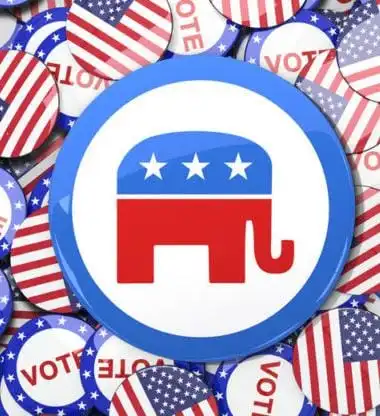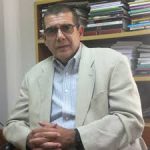U.S. Presidential Elections. Myths and Realities of the Forecasts

Translated by: Amb. Oscar de los Reyes, CIPI
The U.S. presidential elections provoke interest the world over because their results can have notable impacts at various levels. Although they are scheduled to occur one day every four years, in practice they are processes that begin months or years in advance and generate a considerable volume of content aimed at anticipating the winner.
There are researchers who argue that in real terms, the U.S. political class is in a constant electoral process, if we take into account the so-called mid-term elections and the fact that several states frequently go to the polls to elect candidates to offices that are vacant for various reasons.
Both for those who follow the electoral cycle for sporadic informative interest as for those who do so for professional reasons, it is difficult to differentiate useful information from that which distorts the facts with a sensationalist approach or simply for commercial purposes.
However, it is necessary to discriminate which data really contribute to the analysis. In Cuba, with the experience accumulated during several decades of observation of this process, it is possible to propose a methodology based on those variables which, in our opinion, allow an approximation to a possible result of the presidential elections in the United States. For this purpose, both the successes and failures that have occurred in previous exercises are taken into account.
It must be acknowledged that this is a process with a high component of uncertainty, which can be defined in very few states of the Union and by very few votes, in which unexpected events (in this case the health of both candidates) and even local events can have an impact on the final result. Nevertheless, the information suggested to be prioritized may provide higher quality data to the assessments.
It is not possible at this time to affirm, with solid arguments, who will win the November 2024 elections in the United States. However, this methodology will make it possible to clarify which candidate has the best chance of winning, based on the information available at the time of the analysis. It also points out those data that will have to be prioritized in their monitoring along the road ahead.
An exercise of this nature is complex and perfectible, but it is also necessary. The present proposal does not ignore that there are other methods to approach presidential elections in the United States, nor does it consider irrelevant aspects that were omitted in the article. However, its practical usefulness was verified in the professional performance of the authors, who hope that its publication will contribute to the debate inside and outside Cuba on a subject that affects everyone.
This exercise in no way replaces the greater task of imagining scenarios that can be built, based on the election of one or the other candidate, and that lead each foreign ministry in the world to rethink its main priorities with respect to the United States in one or the other case.
First of all, it is important to remember that presidential elections in the United States take place throughout the country on the same day, but they cannot be analyzed as a national process, since the criterion for victory is not the vote of all U.S. citizens (popular vote). The states are assigned different amounts of electoral votes, within a so-called Electoral College, which total 538 nationwide and are the ones that actually define the winner. The first candidate to obtain 270 of those votes – after some steps usually of a protocol nature – is sworn in January as the new president of the United States.
Therefore, it is not necessary to follow up on what happens in each state of the Union, but to focus on those that should be more closely contested, which in the terminology of the subject are called swing states, because they oscillate in their local preference with respect to one or another federal party by a narrow margin.
Most states have a historical voting pattern, which defines them in favor of either the Democratic or Republican candidate well in advance. In the first group are 19 states and the District of Columbia, which add up to 226 electoral votes virtually assured for the Democrats. At the other extreme are 26 states which, together, would contribute 235 points to the Electoral College in favor of the Republicans[1].
The list of these swing states may vary depending on the expert consulted, but there is a relative consensus that Arizona (11 electoral votes, won by 10,457 votes in 2020), Georgia (16 electoral votes, won by 11,779 votes), Wisconsin (10 electoral votes, difference of 20,682 votes[2]), Pennsylvania (19), Nevada (6) and Michigan (15) should be included among the states to be monitored. Most of the information of interest would then be that which comes from and about these states.
If a more extensive criterion is chosen, which lends greater certainty to the forecast, other states can be incorporated, such as North Carolina (16), New Hampshire (4) and Florida (30).
Once the states where the election is likely to be defined have been identified, a characterization of these states should be carried out. The indicators to be recorded should include:
- Number of electoral votes. Indicates the impact of the state on the Electoral College. The figure may vary every ten years, as a result of the national Census conducted accordingly. All states, with the exception of Maine and Nebraska, award all of their electoral votes to the winner of the popular vote in the state.
- Demographic characteristics. It should include race, age, gender, place of origin, type of community -rural, urban or suburban-, level of education and income. This has been an issue since states with a consistent Republican tradition, such as Colorado or Arizona, have changed the results in favor of the Democrats.
- Track record in elections. Includes winners in presidential elections or for other relevant offices. Allows to identify recent trends or changes in favor of a party.
- Political party affiliation. Although a correspondence between the political party to which a person belongs and the party of the candidate he or she supports is not mandatory, it is an indicator of which party the citizens of a state most identify with. It is also possible to vote without belonging to a party, as an independent, so maintaining an active affiliation is an intentional act that reflects the individual’s affinity with that party’s agenda. Increasingly, there are states where the balance is tipping toward the definition of so-called independents.
- Relevant counties. These are counties where the winner of the state may be defined.
- Endorsements and sponsorships. The public support of important figures in the state for one of the main candidates may influence voter opinion, depending on the relevance of these individuals and their involvement in the campaign. Main organizations and individuals supporting each other and their level of financing
- Other peculiarities of the state. If any, issues that may distinctively influence the election results in the state should be included.
- Issues on the ballot. Each state decides locally on issues to be placed on the ballot on Election Day, which can mobilize many voters, well beyond the candidates’ platforms.
- Legal limits. Each state legislature passes legislation that facilitates or limits the right to vote to certain types of individuals, or makes the exercise of the right to vote more difficult in terms of voting hours, voting places, documentation to be presented and others.
- Perception about the state of the economy at the global and local level.
- Facts of interest of the primaries. Record of peculiarities that may have an impact on the elections, such as participation rates compared to other years or if there were delays in obtaining the results.
Electoral forecasting has become another product that is sold at a hefty price in the U.S. political market, so there is a diversity of polls[3], methodologies and polling services, and a great deal of content is generated around their results, especially in the months leading up to the elections. Some of these products are not even used to confirm voting intentions, but to mobilize financial resources in those destinations that are considered «at risk». It will then be necessary to discriminate the sources according to the case.
- Types of polls. Those about the state, those conducted in the state (local pollsters) and generic ballot polls will be privileged. National polls will not be taken into account because, as mentioned above, presidential elections are not a national process, but are decided within each state. Platforms such as Real Clear, 538 and the Election Center of Decision Desk and The Hill allow access to information organized through filters, with attention to the degree of bias of the polls.
- Types of samples. Samples of likely voters and, to a lesser extent, registered voters will be preferred. These are more likely to participate in the elections than those who do not vote, or who do not meet the requirements to vote at the time of the election. For example, a survey on support for a presidential candidate whose sample is made up of recently arrived immigrants (non-citizens and non-registered) is not relevant in an election context because these people are not eligible to vote.
- Survey averaging and evolution. In isolation, survey results are more limited than when considered as a whole and trends over time are taken into account.
- Classification of surveys. This is a subjective section but it helps to understand the usefulness of a survey and the appraisals that can be derived from it[4].
- Margin of error. Surveys in which the difference between the candidates is less than the margin of error of the survey should be carefully examined.
Items (1) and (2) are mainly related to analytical work that refers to particular surveys since, if other surveys are used, they may distort the conclusions reached. The indicators in (c) and (d) provide a more general overview because they allow us to appreciate trends that would go unnoticed if we limit ourselves to evaluating isolated surveys.
In the case of (5) it should be remembered that one of the factors that led to greater inaccuracy in the 2016 exercises was that many respondents refused to answer the pollster’s questions and were not counted, or that they simply lied for fear of popular pressure.
There are no infallible opinions or sources on processes as complex as the one at hand, but there are experts who study with depth, consistency and seriousness the elections in the United States. For this reason, their analyses are valuable and contribute to add content to an initial work that might be only statistical.
The frequency with which a candidate visits a state and participates in campaign events indicates the importance he or she places on that state for victory. For example, the fact that the Democratic campaign waited until the second half of 2020 to visit Florida pointed to the low relevance that Biden’s team conferred to the state within its victory strategy, and the results confirmed the error.
It must be recorded in each state whether voting by mail, or so-called early voting, will be implemented, whether it will be facilitated, whether it will be massive or restricted, the date by which the ballots must be received and whether it is really feasible. The degree to which this practice is developed may favor a particular candidate – in the current context, the Democrat – and affect the speed of the vote count on Election Day. Early public handling, or leakage of some data, could influence the results for those who vote last, because of time zone differences.
On the other hand, the amounts that each campaign raises, how it distributes them and how much money it has available in the weeks leading up to the election may prove to be crucial in a process that is marked, in its essence, by the use of finances, rather than by their total amounts.
- Campaign fundraising and cash on hand. Refers to the amounts raised in favor of each candidate at the national level.
- Individual contributions in the state. Indicates support for candidates, as it implies active involvement.
- Funds for ads. Funds that campaigns and PACs[5] allocate to television, digital or radio ads. They contribute to understanding the importance they attach to the state for victory and address issues they consider relevant to the state’s voters.
In each electoral cycle, those that can be considered as «other issues» are recorded. The indicators for this variable will be different depending on the electoral cycle being monitored, as they respond to the particular context in which each one takes place. For example, in the 2020 elections, the impact of the COVID-19 pandemic should be considered; however, it is not a measure for the current elections. For the present exercise, the following could be considered as examples.
- Health condition of the candidates. In the present elections, the current president Joe Biden and former president Donald Trump, 81 and 77 years old respectively, are outlined as the possible candidates of the Democratic and Republican parties. Both have been singled out for visible signs of possible cognitive impairment and doubts about the real possibilities of them being able to complete a second term. At the moment, perceptions about the state of health are turning out to be more negative in the case of Biden, who is older and has greater public exposure in his capacity as president.
- Vice-presidential candidate. This indicator is directly linked to the previous one in this election, due to the possibility of two elderly candidates and the risk that their vice-presidential choice may have to take control of the Executive at a given moment. In another sense, it is also possible that this person complements the support of important sectors of the electorate, or compensates for issues that constitute weaknesses of the presidential candidate.
- Major issues of interest. Generally speaking, it is possible to list a group of issues that are relevant to important sectors of the electorate. In the case of the 2024 elections, examples include: the perception of the state of the economy (which is almost permanent), immigration, the legal charges brought against Trump, the likely outcome of any of the trials, and the involvement of the United States in military conflicts.
There are two other events that have a local record, which may be definitive in the so-called swing states. One of them is the performance in the so-called electoral debates that may take place and the other is the impact of the national conventions of both parties to define the platforms that, nominally, contain the priorities that each team will defend in case of being elected.
Although it may seem hard to believe, it has been established that the image each candidate projects in the debate has a greater impact on American audiences than the ideas he or she puts forward. This image includes everything from the quality of the suit he wears that day, to his body language and the number of times he smiles.
Thus, the information found in each case must be processed in order to reach conclusions. The latter should allow us to identify a possible winner in the key states and, together with the rest of the virtually «secured» states, we will obtain tentative electoral maps. Such a process will require permanent adjustments as the elections draw nearer and, although not all states will be assigned, it is sufficient for a candidate to achieve 270 electoral votes. Once the elections are over, the methodology should be reviewed to see what data should have received greater weight. Adjustments of this type will allow us to learn from our mistakes and achieve better
[1] In this regard, we suggest consulting the article «Presidential Elections 2024: the fight in the key states», by researcher Carlos Ciaño Zanetti, available at: https://www.cipi.cu/elecciones-presidenciales-2024-la-lucha-en-los-estados-clave/.
[2] Arizona, Georgia and Wisconsin had the narrowest margins of victory during the 2020 elections.
[3] For example, there are national polls, generic ballot polls -which ask which party they would support regardless of the candidate-, approval polls and state-by-state candidate polls.
[4] We recommend the article «What are the best pollsters in America?», available at: https://abcnews.go.com/538/best-pollsters-america/story?id=105563951
[5] Political Action Committees: groups that raise and allocate funds for electoral campaigns.




Déjanos tu comentario